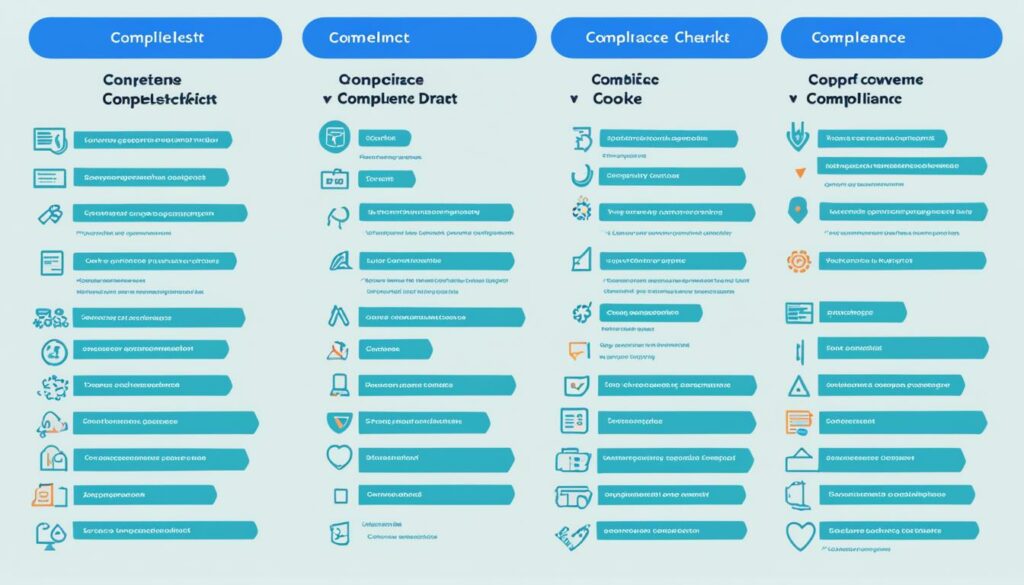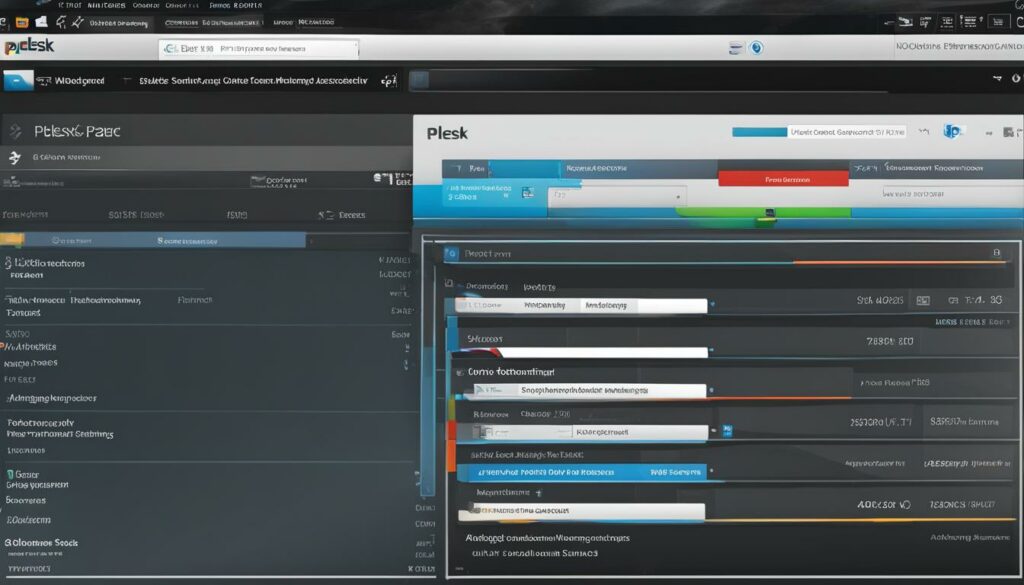Welcome to the world of video streaming! In today’s digital landscape, video streaming has become a powerful tool for businesses and content creators to engage their audience, share valuable information, and showcase their creativity. Whether you’re planning to host webinars, live events, or want to launch your own video streaming platform, understanding the key insights and best practices for hosting is essential for success.
When it comes to hosting video streaming, there are several factors to consider to ensure a seamless and engaging experience for your viewers. From choosing the right platform to optimizing video encoding, every step plays a crucial role in maximizing reach and viewership.
One of the first decisions you need to make is choosing the right platform for your video streaming needs. There are numerous stream hosting providers available, each offering different features and capabilities. Popular platforms like YouTube, Vimeo, Twitch, Netflix, and Hulu have their own strengths, catering to different audiences and providing various monetization options. Evaluate your requirements and choose a platform that aligns with your goals and target audience.
The quality of your video content heavily relies on the equipment you use. Invest in a good camera that can capture high-resolution videos and pair it with microphones, lighting setups, and tripods to enhance the production value. High-quality equipment ensures that your videos look professional and engaging, leaving a lasting impression on your viewers.
A stable internet connection is crucial for seamless video streaming. Make sure you have a reliable and high-speed internet connection to avoid buffering issues and poor video quality. Consider using a wired connection for streaming live content to ensure a stable and consistent viewing experience for your audience.
Optimizing video encoding and compression is vital to deliver high-quality videos while minimizing bandwidth requirements. Use modern video codecs such as H.264 or H.265 to compress videos without compromising quality. Experiment with different encoding settings to find the right balance between file size and video quality.
Implementing adaptive bitrate streaming allows you to adjust the quality of your video stream based on the viewer’s internet connection. This ensures a smooth viewing experience, regardless of the device or network condition. Popular streaming platforms often provide built-in support for adaptive streaming, enhancing viewer satisfaction.
Engaging with your audience is key to building a loyal fan base. Interact with your viewers through live chats, comments, and social media platforms, creating a sense of community around your content. Analyzing performance metrics, such as viewer engagement and retention, can help you optimize your video streaming strategy and continue to deliver content that resonates with your audience.
Hosting video streaming can be a game-changer for your business or personal brand. By following the best practices and leveraging these key insights, you can create an immersive and captivating video streaming experience that keeps viewers coming back for more.
Key Takeaways:
- Choose the right platform that aligns with your goals and target audience.
- Invest in quality equipment to enhance the production value of your videos.
- Ensure a stable internet connection to prevent buffering and poor video quality.
- Optimize video encoding and compression to balance quality and bandwidth requirements.
- Implement adaptive bitrate streaming for a smooth viewing experience.
Choose the Right Platform
When it comes to hosting your video streaming content, selecting the right platform is crucial for reaching your audience effectively. Consider the following factors to ensure you make an informed decision:
Audience Reach
Analyze the user base of different video streaming platforms to determine which one aligns best with your target audience. YouTube, Vimeo, and Twitch are popular options with a wide reach, providing an opportunity to connect with a diverse viewership.
Scalability
Ensure the platform you choose can accommodate your future growth. Look for scalability options that can handle an increasing number of viewers and allow for seamless expansion.
Monetization Options
Consider your monetization goals and explore the different options offered by various platforms. YouTube, for instance, provides opportunities for ad revenue, while Netflix and Hulu provide subscription-based models.
Content Management Capabilities
Assess the content management tools provided by different platforms. Look for features such as metadata optimization, analytics, and customizable playlists, which can enhance your ability to organize and promote your videos effectively.
By carefully considering these factors, you can choose a video streaming platform that aligns with your goals and helps you maximize audience reach, scalability, monetization options, and content management capabilities.
| Platform | Audience Reach | Scalability | Monetization Options | Content Management Capabilities |
|---|---|---|---|---|
| YouTube | Massive | Highly scalable | Ad revenue | Robust tools and analytics |
| Vimeo | Targeted | Moderately scalable | Paid subscriptions | Customizable portfolios |
| Twitch | Gaming and live streaming focused | Highly scalable | Donations, subscriptions, and ads | Gaming-specific features |
| Netflix | Subscription-based | Highly scalable | Subscription plans | Curation and recommendation algorithms |
| Hulu | Subscription-based | Highly scalable | Subscription plans and ads | Recommendation algorithms |
Invest in Quality Equipment
To deliver high-quality video content, it is crucial to invest in the right equipment. A good camera capable of capturing high-resolution videos is essential for producing visually stunning content. Consider cameras from reputable brands such as Canon, Sony, or Panasonic, known for their excellent image quality and advanced features.
Alongside a good camera, additional equipment like microphones, lighting setups, and tripods can greatly enhance the production value of your videos.

When it comes to audio, a good-quality external microphone ensures clear and professional sound. Look for microphones from brands like Rode, Shure, or Audio-Technica, which offer reliable options for both on-camera and off-camera recording.
Proper lighting is crucial for achieving a polished look in your videos. Invest in lighting setups that provide even illumination, eliminating shadows and ensuring consistent brightness. Consider options like softboxes, LED panels, or ring lights.
Finally, a sturdy tripod is a must-have for steady shots and smooth camera movements. Look for tripods that are lightweight yet durable, with features like adjustable height and fluid head for easy maneuverability.
Remember, investing in quality equipment not only improves the overall production quality but also demonstrates your commitment to delivering high-quality video content to your audience.
Ensure a Stable Internet Connection
When it comes to video streaming, a stable and reliable internet connection is key to ensuring a seamless viewing experience. Slow or intermittent internet can lead to frustrating buffering issues and poor video quality. To avoid these pitfalls, it is crucial to have a high-speed internet connection with sufficient bandwidth.
One of the best ways to ensure a stable internet connection is by using a wired connection rather than relying solely on wireless networks. While Wi-Fi can be convenient, it is susceptible to interference and signal loss, which can disrupt your streaming experience. By connecting your device directly to the modem or router with an Ethernet cable, you can enjoy a more stable and consistent streaming experience.
Not only does a stable internet connection prevent buffering, but it also enables you to stream live content without interruptions. Whether you’re broadcasting a live event or participating in a webinar, a reliable connection is essential to keep your audience engaged and satisfied.
So, before you hit that play button, make sure you have a stable internet connection to enjoy seamless video streaming. It’s the foundation that allows you to fully immerse yourself in your favorite shows, movies, or live events.
Optimize Video Encoding and Compression
When it comes to delivering high-quality videos while minimizing bandwidth requirements, video encoding and compression play a vital role. By optimizing these aspects, you can ensure that your videos maintain their visual integrity without compromising on file size or video quality.
To achieve this, it’s important to utilize modern video codecs such as H.264 or H.265. These codecs provide efficient compression algorithms that significantly reduce the file size while preserving the clarity and detail of the video. This means you can deliver high-quality videos to your audience without overwhelming bandwidth requirements.
Additionally, optimizing encoding settings allows you to strike the right balance between file size and video quality. Experimenting with different encoding parameters, such as bit rate, frame rate, and resolution, can help you find the optimal settings for your specific content and target audience.
By carefully optimizing video encoding and compression, you can ensure that your videos are visually stunning, easily streamable, and accessible to audiences with varying bandwidth capabilities. This not only enhances the viewing experience but also helps you reach a wider audience without compromising on quality.

“Video encoding and compression are essential for delivering high-quality videos while minimizing bandwidth requirements. By utilizing modern video codecs such as H.264 or H.265 and optimizing encoding settings, you can strike the perfect balance between file size and video quality.”
Implement Adaptive Bitrate Streaming
Adaptive bitrate streaming is a key technology that ensures a smooth viewing experience for your audience, regardless of their internet connection. By adjusting the quality of the video stream in real-time, adaptive bitrate streaming eliminates buffering and reduces loading times, resulting in higher viewer satisfaction.
When a viewer has a slow or unstable internet connection, adaptive bitrate streaming automatically adjusts the video quality to match their bandwidth. This means that even with a lower internet speed, viewers can still enjoy your content without interruptions or frustrating buffering issues.
Popular streaming platforms often provide built-in support for adaptive bitrate streaming, making it easy to implement and deliver a seamless viewing experience. Whether your viewers are using mobile devices, computers, or smart TVs, adaptive bitrate streaming adapts to their specific network conditions, ensuring a consistent and smooth playback experience.
By implementing adaptive bitrate streaming, you can significantly enhance the viewer’s experience and improve their satisfaction with your content. With reduced buffering and loading times, your audience can enjoy uninterrupted streaming, allowing them to fully engage and appreciate the value you provide.
Key benefits of implementing adaptive bitrate streaming:
- Smooth and uninterrupted viewing experience
- Elimination of buffering issues
- Reduced loading times
- Compatibility with various streaming platforms and devices
- Higher viewer satisfaction and engagement
To implement adaptive bitrate streaming, ensure that your video content is encoded at different quality levels and contains multiple bitrate variants. This allows the streaming server to adapt the video quality based on the viewer’s internet connection, providing the best possible experience for each viewer.

With adaptive bitrate streaming, you can deliver a smooth and enjoyable viewing experience to your audience, regardless of their internet connection. By investing in this technology, you’ll enhance the overall quality of your streaming service and create a loyal and satisfied viewer base.
Conclusion
Hosting for video streaming is an essential aspect of achieving success in the digital landscape. By following key best practices such as choosing the right platform, investing in quality equipment, ensuring a stable internet connection, optimizing video encoding and compression, implementing adaptive bitrate streaming, optimizing metadata and thumbnails, engaging with your audience, and analyzing and optimizing performance, you can maximize your reach, engagement, and success in the world of online video streaming.
Choosing the right platform is critical to your video streaming endeavors. Consider factors such as audience reach, scalability, monetization options, and content management capabilities when selecting a platform that fits your needs. Popular platforms like YouTube, Vimeo, and Twitch offer large user bases and robust features, while platforms like Netflix and Hulu cater to specific niches and provide opportunities for monetization.
Investing in quality equipment, such as a good camera, microphones, lighting setups, and tripods, is essential for delivering high-quality video content that captivates your audience. Furthermore, ensuring a stable internet connection and implementing adaptive bitrate streaming help to provide a seamless viewing experience, reducing buffering issues and optimizing loading times.
Lastly, engaging with your audience and analyzing performance metrics enable you to continually improve and optimize your video streaming efforts. By incorporating these best practices, businesses and content creators can elevate their content and effectively engage their audience, leading to increased success and visibility in the world of online video streaming.
FAQ
Q: What are the key insights and best practices for hosting video streaming?
A: Key insights and best practices for hosting video streaming include choosing the right platform, investing in quality equipment, ensuring a stable internet connection, optimizing video encoding and compression, implementing adaptive bitrate streaming, optimizing metadata and thumbnails, engaging with the audience, and analyzing and optimizing performance.
Q: How do I choose the right platform for video streaming?
A: When choosing a video streaming platform, consider factors such as audience reach, scalability, monetization options, and content management capabilities. Popular platforms like YouTube, Vimeo, and Twitch offer a large user base and robust features, while platforms like Netflix and Hulu cater to specific niches and provide opportunities for monetization.
Q: What equipment should I invest in for video streaming?
A: To deliver high-quality video content, invest in a good camera capable of capturing high-resolution videos. Additional equipment such as microphones, lighting setups, and tripods can also enhance the production value of your videos.
Q: How can I ensure a stable internet connection for video streaming?
A: To ensure seamless video streaming, it is important to have a stable and reliable internet connection. Use a high-speed internet connection with sufficient bandwidth, and consider using a wired connection, especially for live content, to provide a more stable and consistent streaming experience.
Q: How can I optimize video encoding and compression?
A: Optimize video encoding and compression by using modern video codecs such as H.264 or H.265. These codecs help compress videos without compromising on quality. Experiment with different encoding parameters to find the optimal settings for your specific content and target audience.
Q: What is adaptive bitrate streaming and why is it important?
A: Adaptive bitrate streaming adjusts the quality of a video stream in real-time based on the viewer’s internet connection. This ensures a smooth and uninterrupted viewing experience, regardless of the viewer’s device or network conditions. Implementing adaptive bitrate streaming can significantly reduce buffering and loading times, resulting in higher viewer satisfaction.












